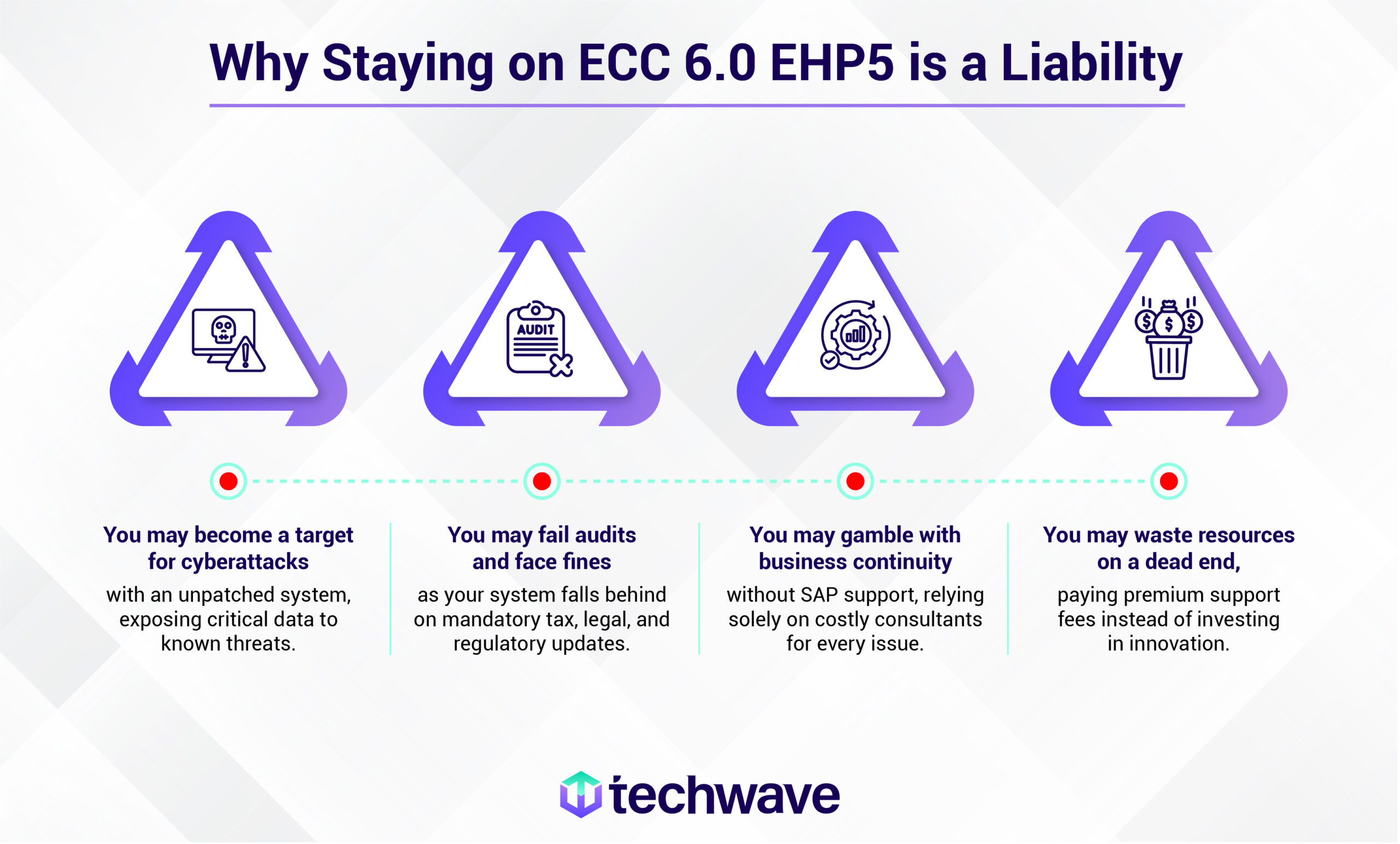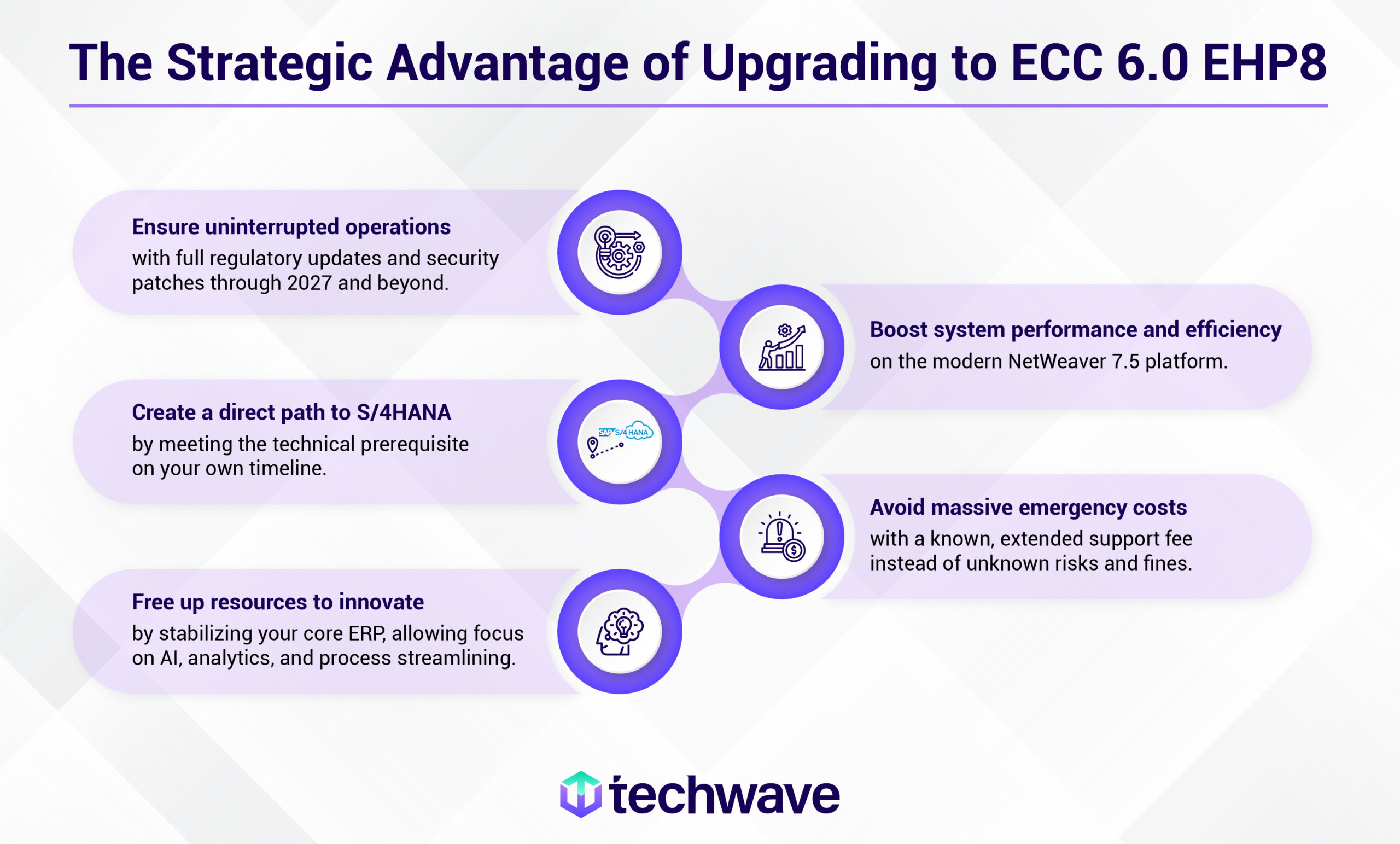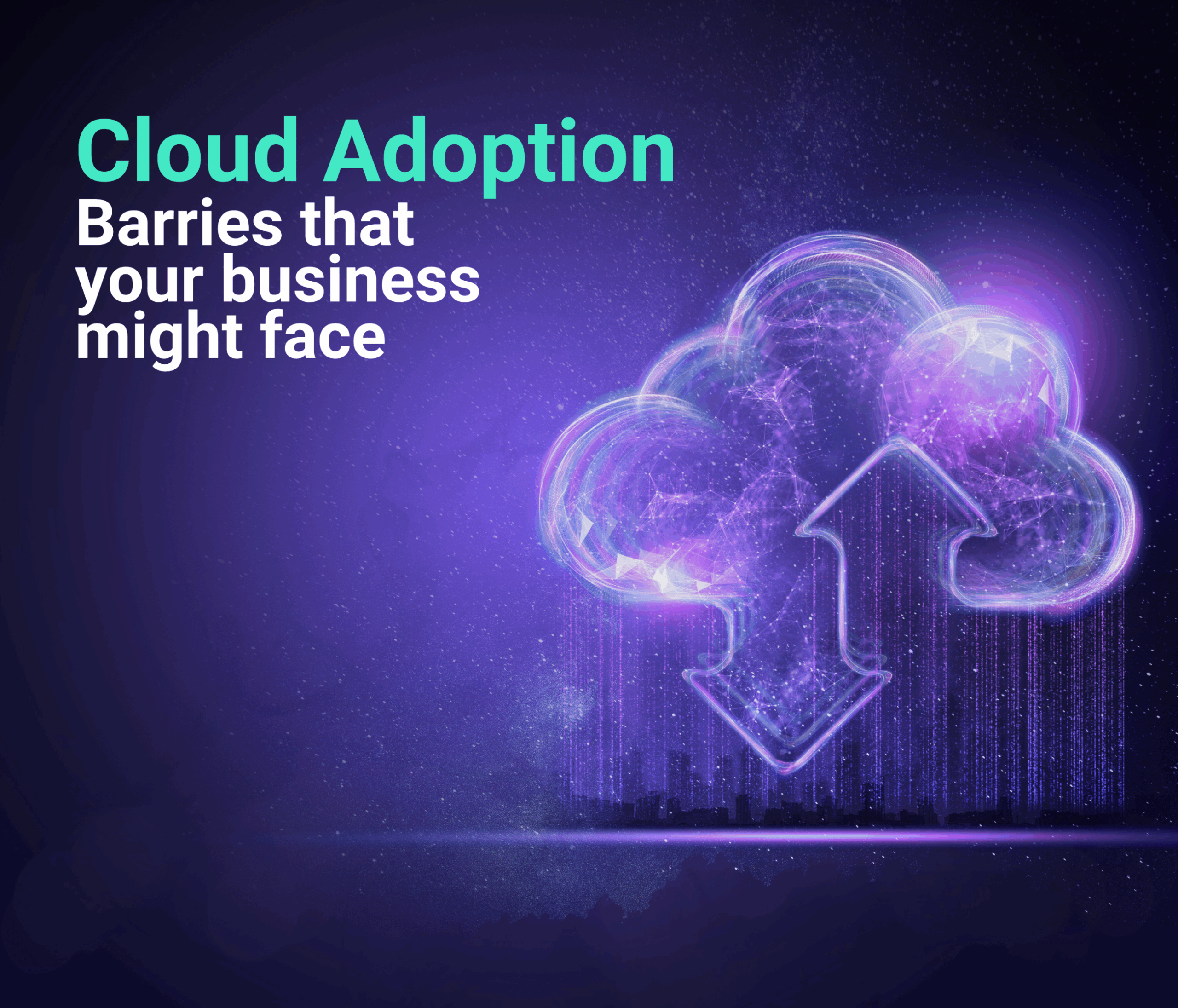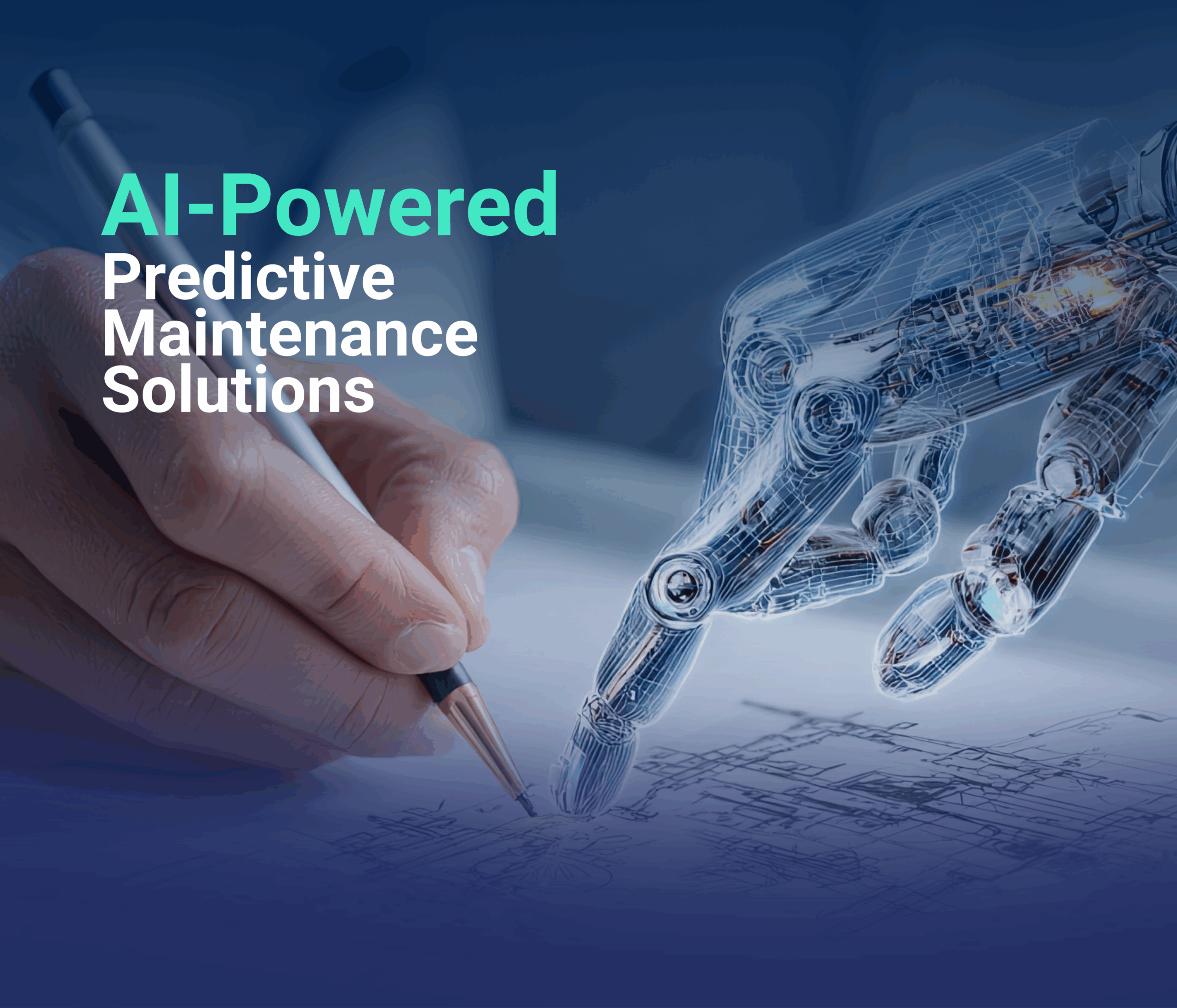EHP8 Upgrade: Minimize Risk, Maximize Readiness, and Prepare Confidently for S/4HANA
Contributor:

Srikant Subramaniam
Vice President 20.09.2025Reading Time:
8 min 40 Sec
SAP’s extended support for Enhancement Package 5 (EHP5) and all older versions vanishes for good on December 31, 2025. While some frame this as a ‘migrate or die’ crisis, seasoned executives see it for what it truly is: a once-in-a-decade catalyst for strategic transformation.
Yes, the risks of staying put are existential, implying your vendor safety net disappears completely, leaving you with no more patches or support and total compliance exposure. But focusing solely on the threat means missing the monumental opportunity it forces upon us.
With S/4HANA adoption at just 39% (of existing SAP ECC customers), the smart money isn’t on hasty migration or dangerous inaction. It’s on the calculated upgrade to EHP8: a move that neutralizes immediate risk, costs a fraction of the full transformation, and positions your enterprise to migrate when business logic, not vendor pressure, dictates timing.
What changed: Support timelines and market shifts
SAP’s roadmap is set in stone. Mainstream support for ECC 6.0 EHP 0-5 will end on December 31, 2025, and there is no extended maintenance option. Only customers on EHP 6–8 will remain in mainstream support until 2027, with costly extensions available until 2030.
SAP has even introduced a niche “ECC private edition” via the SAP ERP private edition transition option, allowing selected business with complex operations to continue with ECC until 2033, provided they meet strict conditions, such as migrating to HANA by 2030. In short, the 2025 cut-off for older ECC systems will not move.
At the same time, industry momentum is clearly pushing SAP customers toward modernization. IDC research shows that more than 60% of existing S/4 customers have already deployed S/4HANA in some form of cloud environment, and many of the rest are actively preparing their migration plans.
The market context has shifted; running ECC is no longer a neutral, low-profile choice; it is a strategic decision under tightening deadlines. Therefore, upgrading to EHP8 is critical not only to maintain SAP support and compliance but also to safeguard system stability, reduce operational risks, and prepare the foundation for a smoother S/4HANA migration.
The risks of inaction
Staying on EHP5 (or earlier) past 2025 carries four categories of risk:

- Security: Without vendor patches, every new vulnerability is a ticking time bomb. As one SAP partner bluntly notes, vital corporate data on unsupported ECC “will have no security patches and therefore become increasingly vulnerable to attack”. Legacy SAP often houses critical finance and HR data, so a breach can be catastrophic.
Today’s average breach costs exceed $4.4 million, and in heavily regulated sectors like finance, the figures climb even higher. Cybercriminals know unpatched SAP systems are easy prey. They maintain databases of known vulnerabilities that will never be fixed, turning your ERP into a preferred entry point. - Compliance: SAP’s maintenance agreements include vital Tax/Legal/Regulatory (TLR) updates. After Dec. 2025, an EHP5 ERP won’t receive SAP’s updates for new tax rules, security standards, or legal changes.
For industries like pharma, the public sector, or financial services, this is untenable. Regulators expect core systems to be maintained (e.g., SOX audits, FDA/21 CFR Part 11 in pharma), and running an unsupported ERP invites fines or audit failures. - Operational and talent: Unsupported software is an operational gamble. Any crash, bug, or performance issue will fall on your IT team (or costly consultants) with no SAP helpdesk fallback.
Finding SAP Basis and ABAP experts for old NetWeaver releases is also harder each year; many skills have shifted to S/4 or cloud. Meanwhile, each extra year on ECC is a year of “technical debt”, system inertia that slows innovation and agility. - Cost and competition: Finally, there’s pure economics. Yes, upgrading is an investment but so is staying behind! SAP will charge a premium for any support past 2027, and third-party maintenance is often negotiated case-by-case basis.
Gartner has observed that companies holding back on S/4 will pay more than their fair share of future maintenance. And consider opportunity cost: funds spent patching an obsolete stack are funds NOT spent on business innovation.
In short, can any boardroom afford to bet the business on delays? Is this really the time to assume “SAP will move the date again”? The deadlines are firm, the risks well-documented, and the longer you wait, the harder and more expensive the eventual move will be.
Why EHP8 is the right move now
Upgrading to EHP8 (ECC6 on NetWeaver 7.5) is not a panacea, but it buys time and flexibility. Here are the key levers in favor of moving to EHP8 now:

- As we already know, EHP8 keeps you in SAP’s mainstream maintenance stream through 2027, with an option for paid extended support to 2030. In practice, upgrading from EHP5 to EHP8 defers the support cliff by two years, giving breathing room to plan the next steps. Importantly, SAP’s extended maintenance surcharge is roughly a 2-4% premium. That may be a far lower price than emergency fixes, fines, or a rushed S/4 project later on.
- EHP8 systems will continue to receive SAP’s security patches and regulatory updates until 2027, so finance closes and legal reporting stays aligned with current rules. For example, tax tables, regulatory transactions (FDA forms, EPA reports, etc.), and certifications (like ISO 27001) remain supported. This means EHP8 acts as a firewall: you satisfy auditors and keep one foot in a supported world, rather than jumping into the gray market of unsupported software.
- EHP8 runs on NetWeaver 7.5 and (optionally) the HANA database. Even if you stay on ECC, this modern platform offers several tangible benefits, including better performance, simpler batch processing, and easier integration with SAP’s newer cloud services. In contrast, EHP5 is tied to older NetWeaver and databases.
- Crucially, being on EHP8 is a technical prerequisite for most S/4HANA conversions. Gartner and IDC advise that realistic S/4 projects often take several years, as processes, data, and custom code are rationalized. By moving to EHP8 now, you ensure any future S/4 migration can leverage SAP’s upgrade tools (SUM/DMS) directly, rather than first having to leap-frog EHP versions.
- While on EHP8, you’re not “stuck” just maintaining; you can allocate effort to cleaning up custom code, streamlining processes, and piloting innovations like AI analytics. In fact, with SAP halting new ECC features after 2016, many companies use the EHP8 upgrade window to reallocate resources. For example, some firms have reported reallocating upgrade budgets into high-impact digital projects once on a stable platform. (In that sense, EHP8 is a bridge; it lets you roll out selective improvements without being forced into an all-or-nothing S/4 leap prematurely.)
EHP8 may not be flashy, but it clears the runway for your ERP’s continued operation while you plan the rest of the flight.
Operating model: People, Process, Platform, Partners
An EHP8 upgrade is not just a technical patch; it requires coordination across people, processes, platform, and partners:
- People: Ensure executive sponsorship and change champions. Upskill your SAP Basis team on NetWeaver 7.5/HANA and get ABAP developers ready for any code adjustments. Engage business stakeholders early (finance, supply chain, HR) so they understand the timeline. Talent-wise, consider hiring or training for hybrid skills (SAP + cloud/DB).
- Process: Treat the upgrade as a mini-transformation. Map and document current critical processes; this is a prime opportunity to streamline before moving to EHP8. Implement strong test and governance practices like allocating time for regression testing, especially around compliance reports. Agile “sprints” or sandbox trials can reduce risk (for example, upgrade a non-production copy first). Plan cutovers carefully; a phased or weekend rollout can minimize business disruption.
- Platform: Most EHP8 migrations involve moving to a HANA database if you’re not already on it. Size and provision this new environment (whether on-premises or in a cloud VM). Make sure the underlying OS and hardware meet SAP’s requirements for NW7.5. Use this as an opportunity to revise your high-availability and disaster-recovery setups. If considering SAP Cloud ERP Private or a hyperscaler lift-and-shift, the EHP8 step sets a clean baseline for a future cloud transformation.
- Partners: Define roles for internal vs external teams. Many companies find it helpful to engage a SAP-experienced systems integrator or consulting house for such upgrades, someone who can handle technical conversions and change management. According to IDC, over 50% of enterprises view SAP as a top strategic partner, and they typically lean on outside expertise for big ERP projects.
Also consider SAP or third-party support: you may choose to stay on SAP standard maintenance (if moving to HANA/EHP8) or switch to specialized third-party support as a stopgap. The key is to have clear service agreements in place before you start.
Aligning these four dimensions will dramatically raise the odds of a smooth upgrade. Companies that build cross-functional upgrade teams, combining IT architects, process owners, and vendor experts, tend to navigate the EHP8 upgrade in under a year. And with careful planning, the transition can be made with little or no material disruption to daily operations.
Confidently face your 2025 SAP deadline with Techwave.
Choosing the right partner can determine whether your upgrade is a technical exercise or a strategic inflection point. Techwave brings proven expertise as a global systems integrator, combining deep SAP knowledge with industry-specific insight to guide enterprises through the essential technical upgrade from ECC to EHP8. With our accelerators and best practices, we can complete the upgrade within 60–90 days, ensuring minimal disruption while confidently preparing your system for a final conversion to SAP S/4HANA.
From roadmap design and compliance assurance to execution, hypercare, and longer-term S/4HANA planning, Techwave provides both the tactical support and the strategic guidance required to minimize risk and maximize business value. By aligning people, processes, and platforms, Techwave ensures that your ERP journey is not just about meeting a deadline but about building resilience and preparing for sustainable growth.
Have further questions? We’re here to help. You can learn from our experienced consultants.




